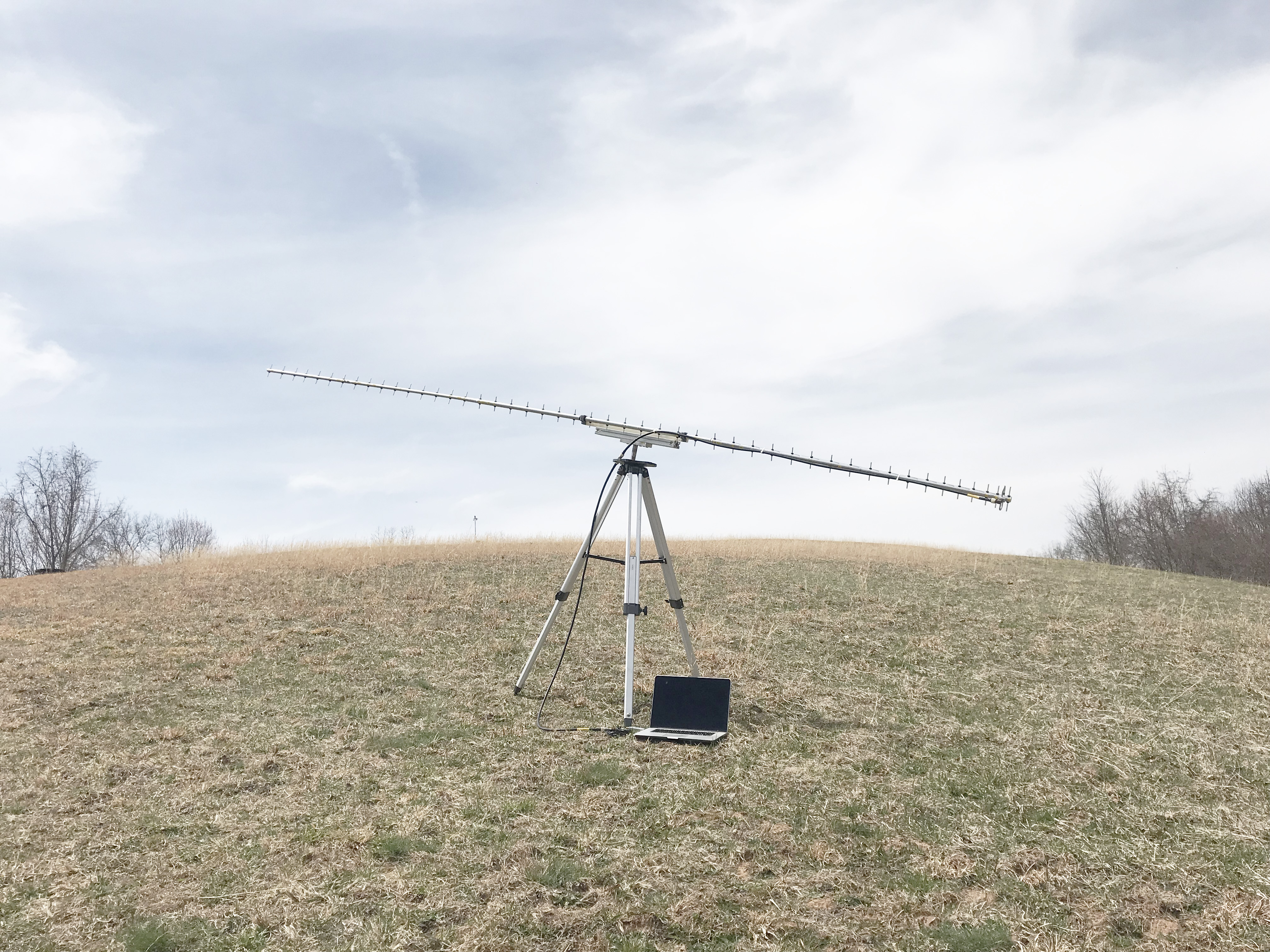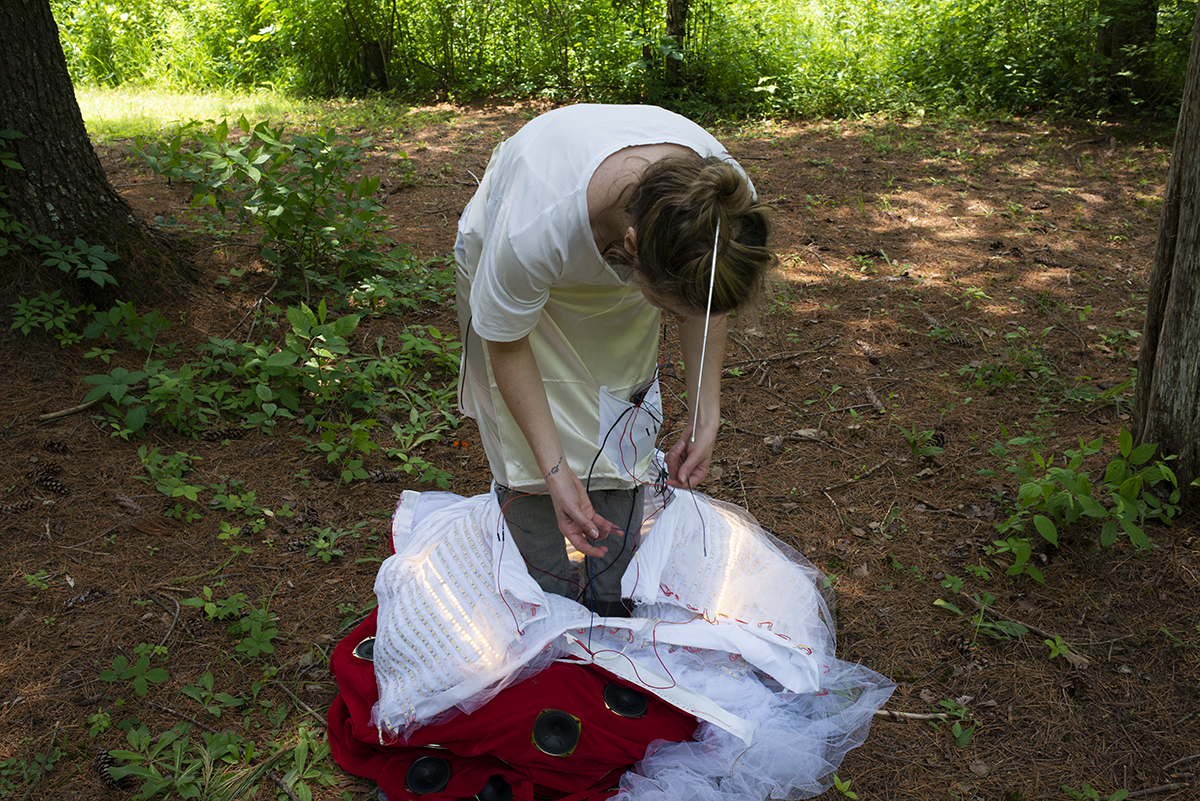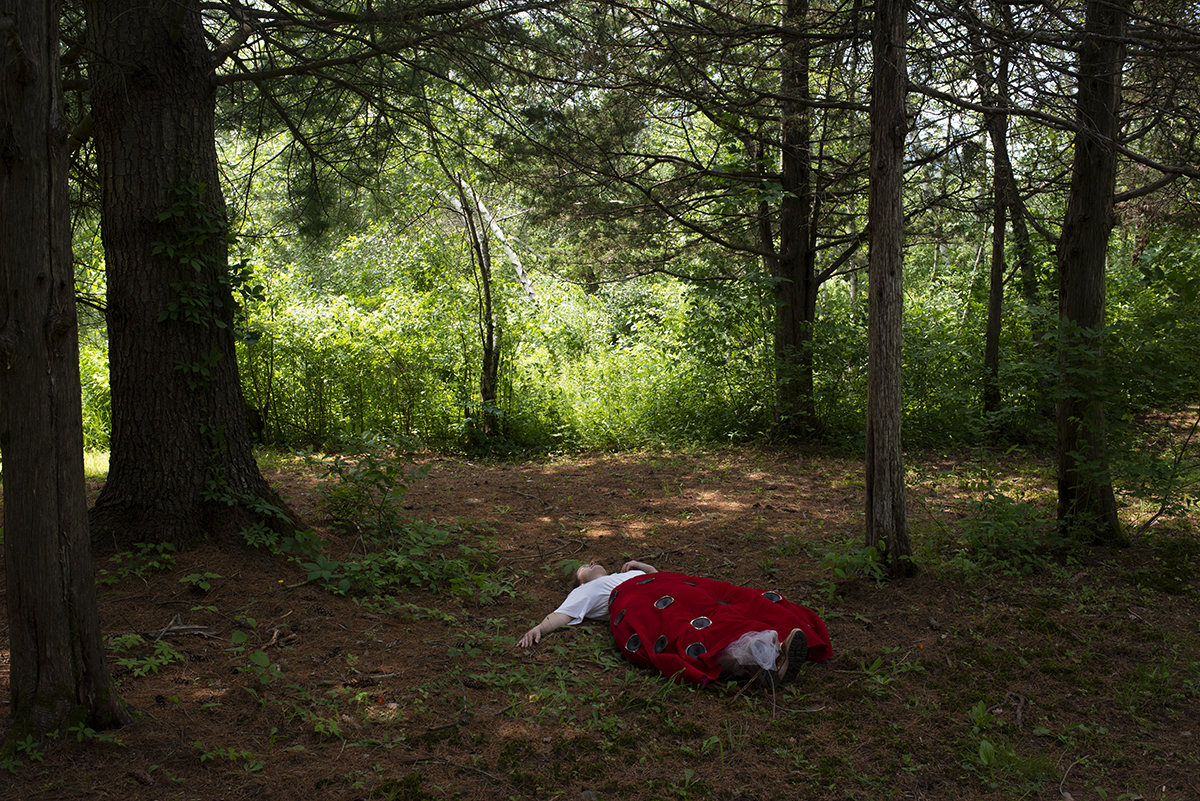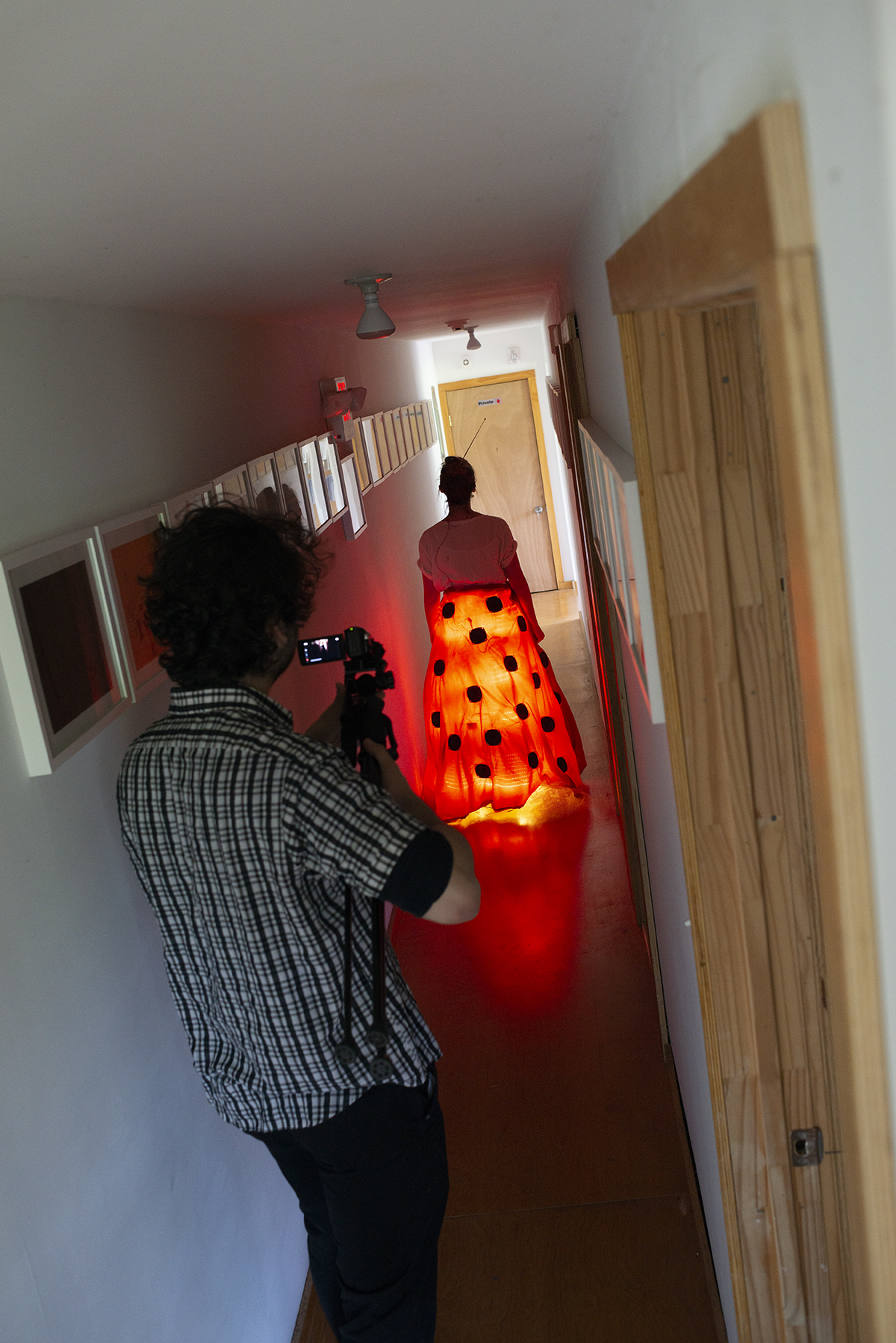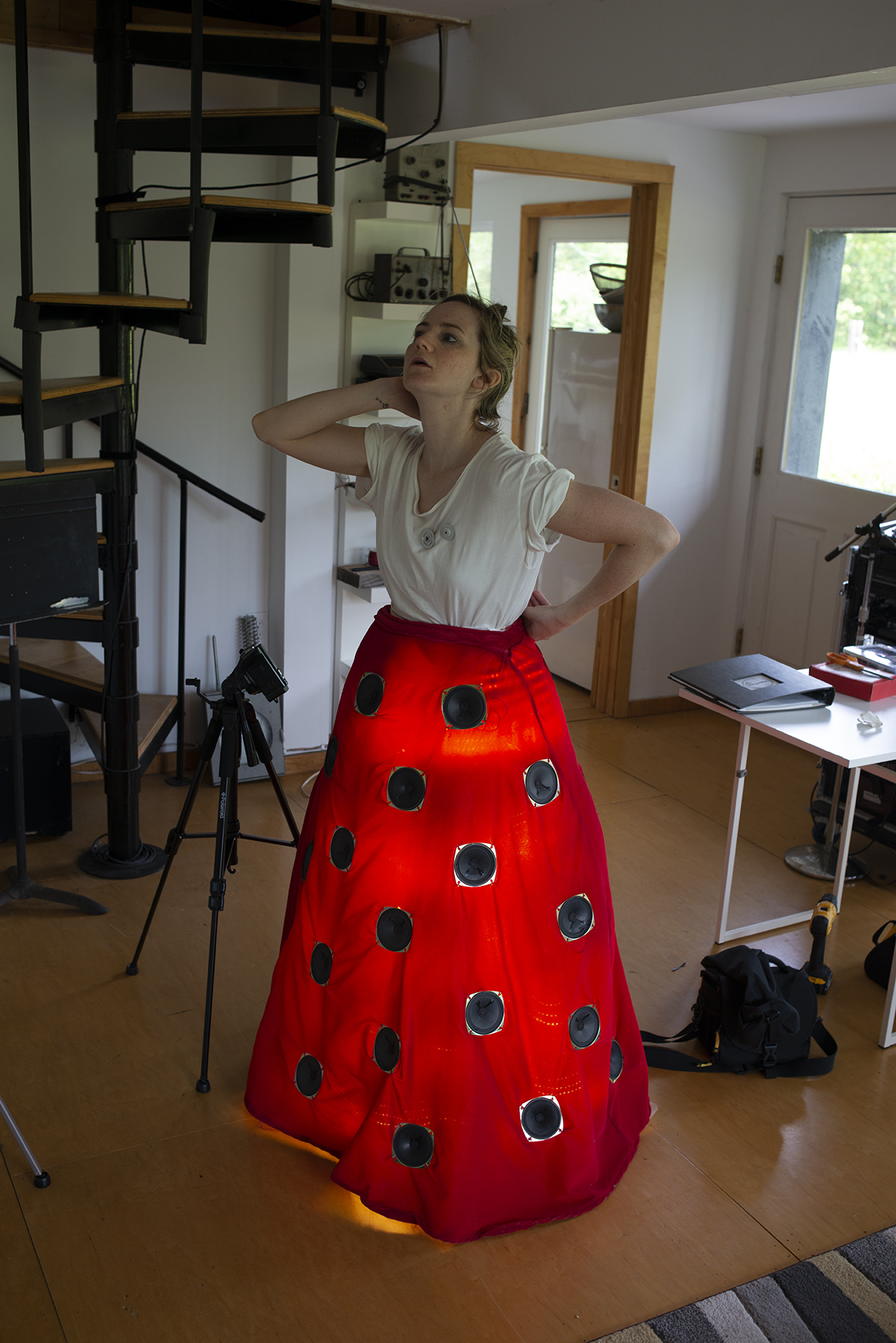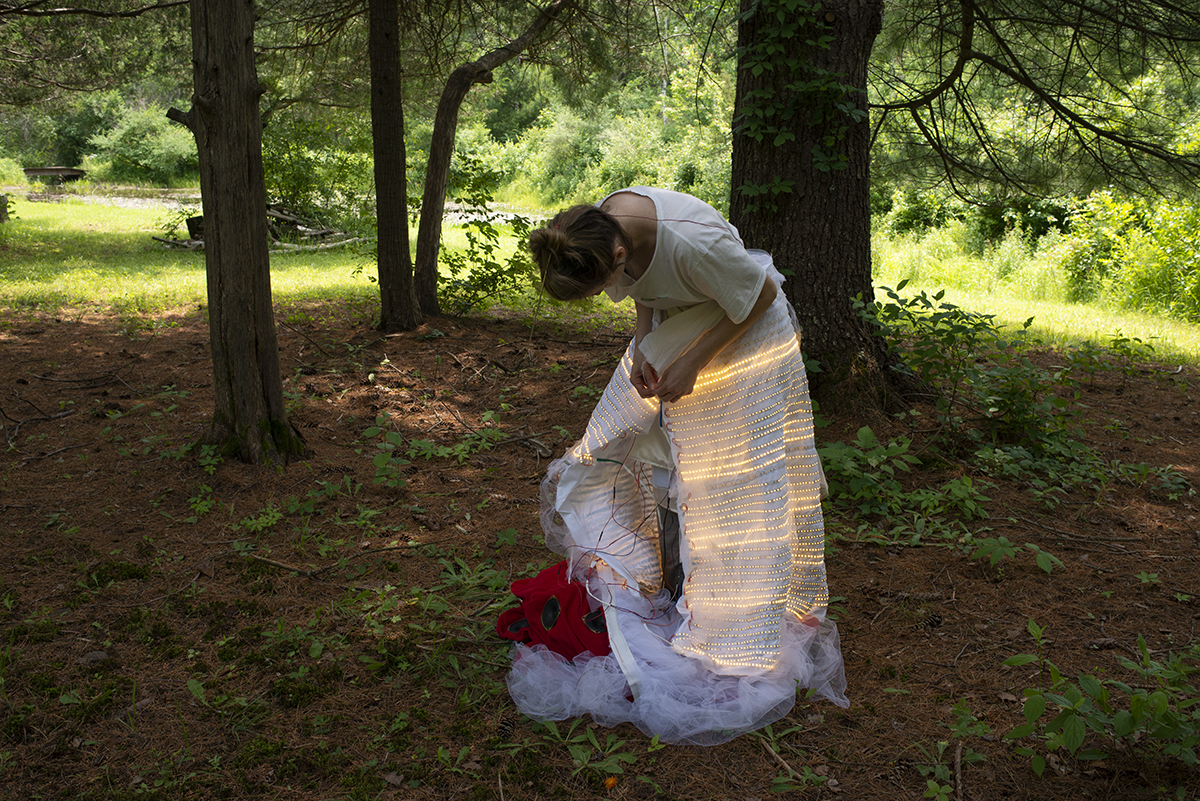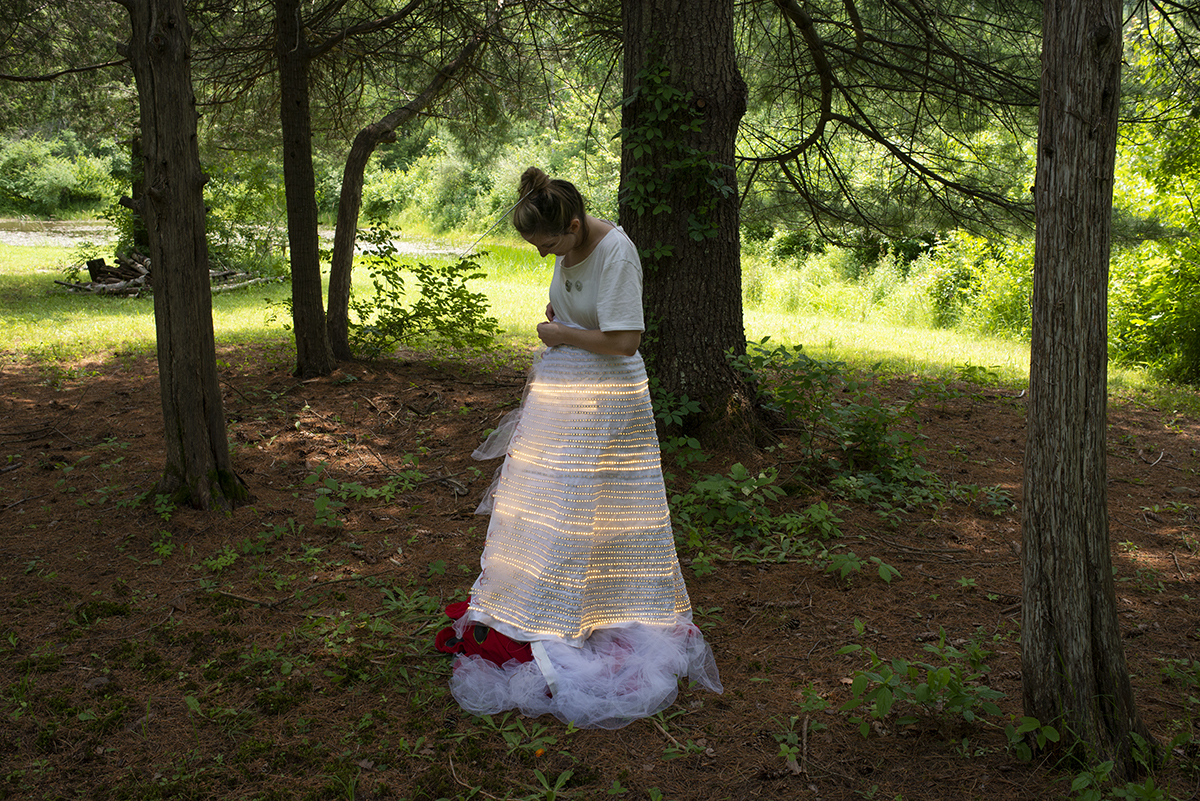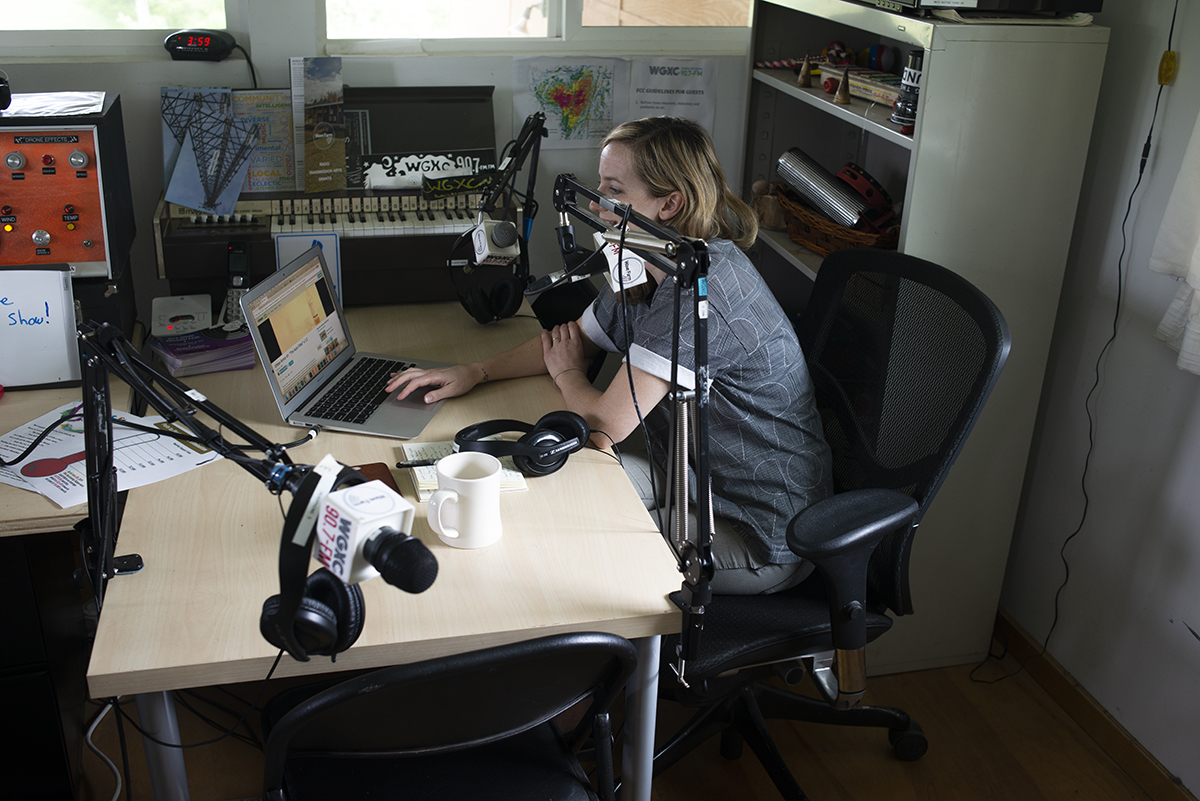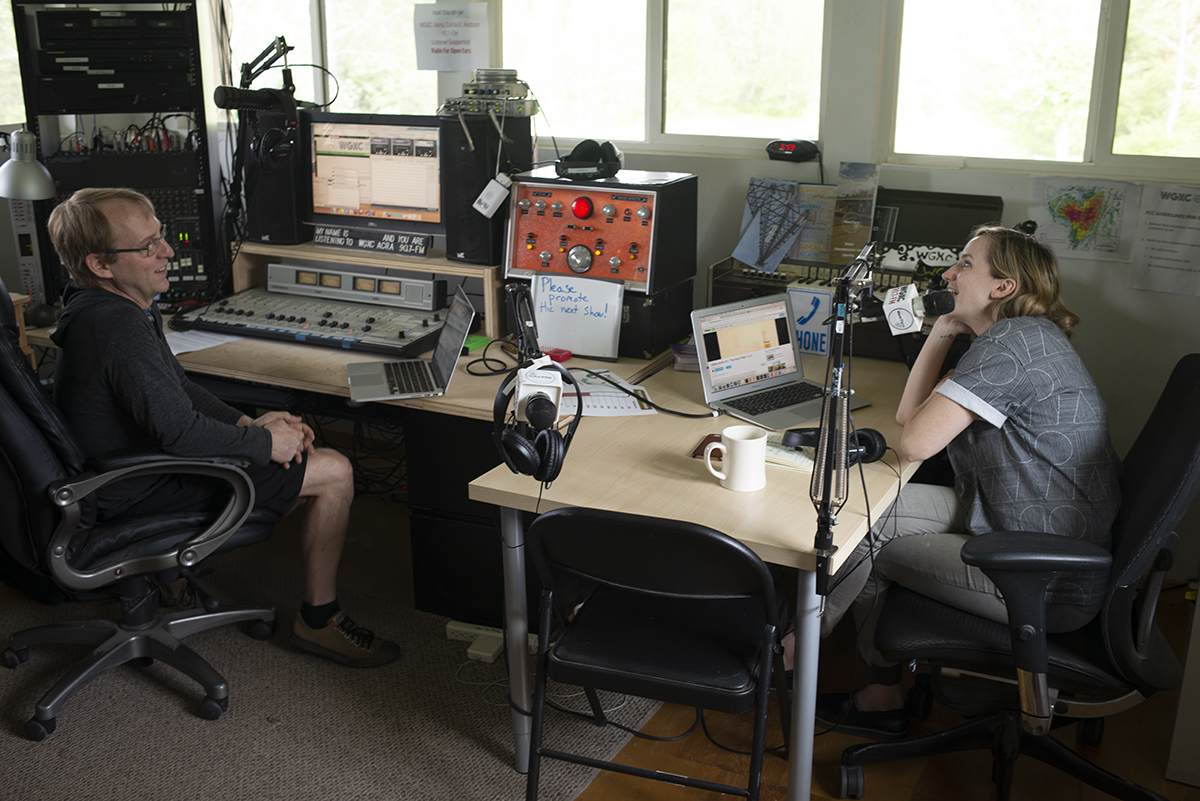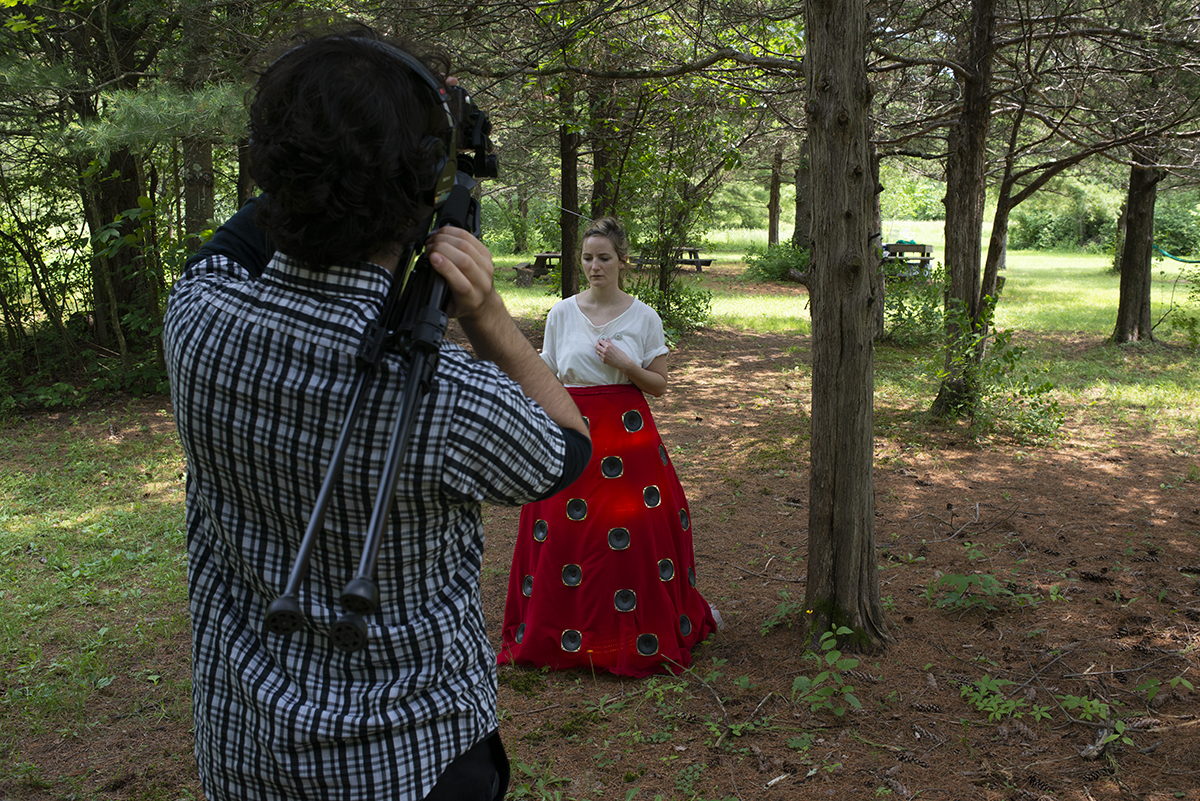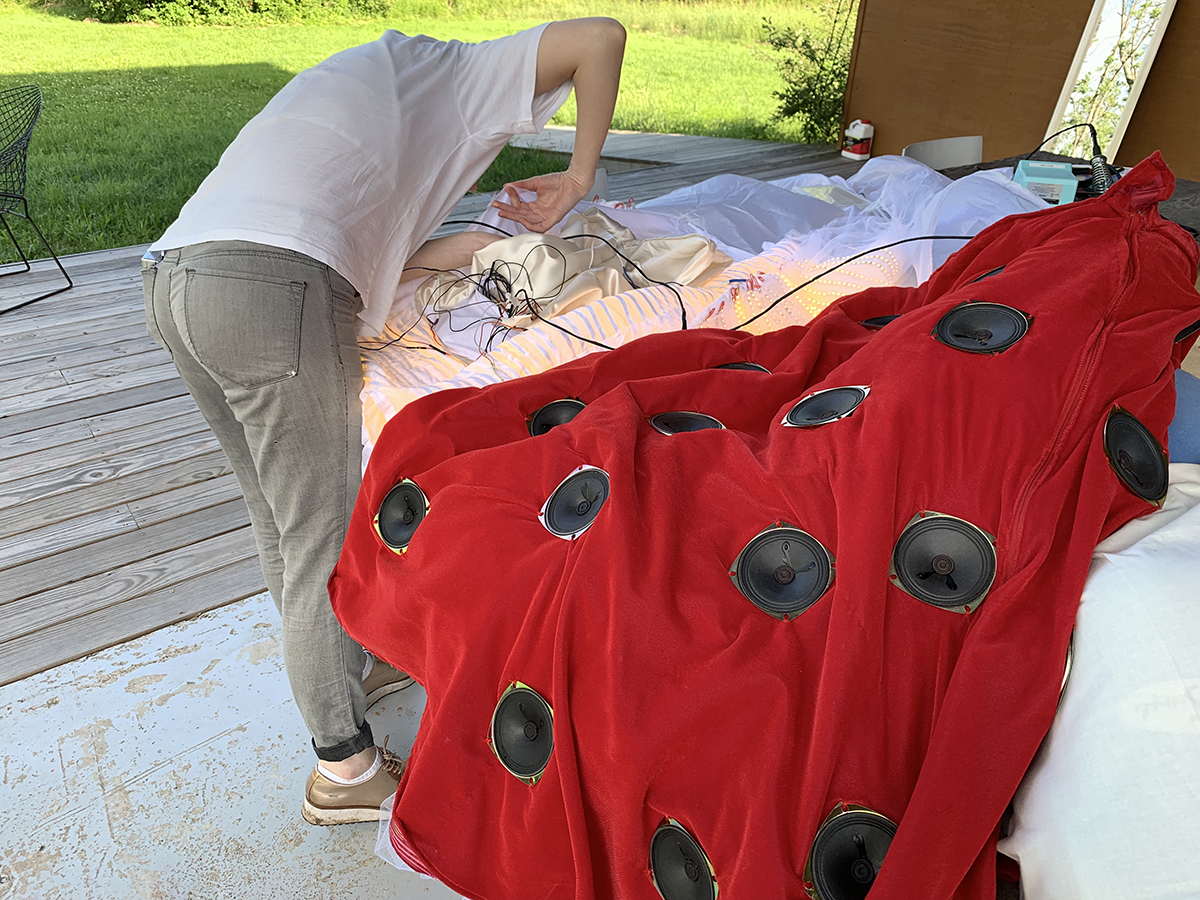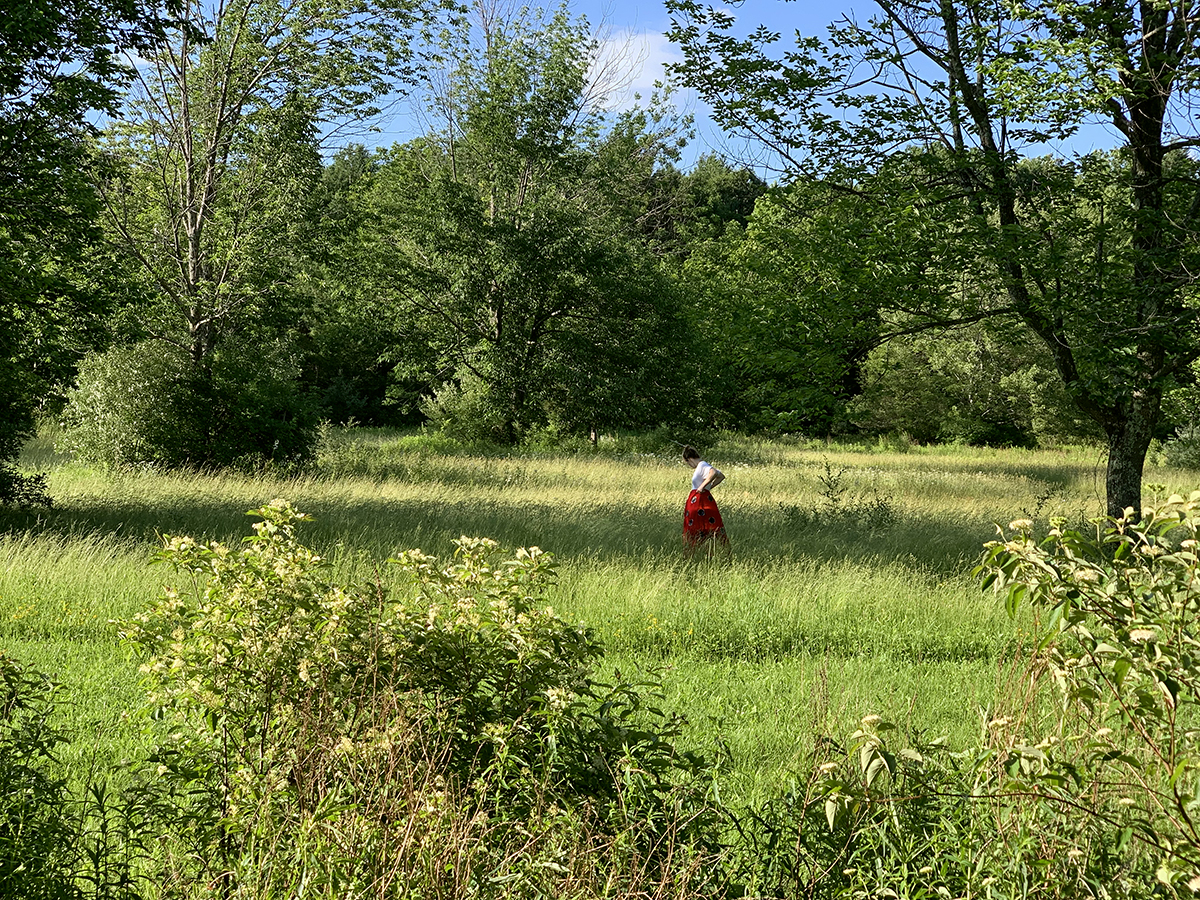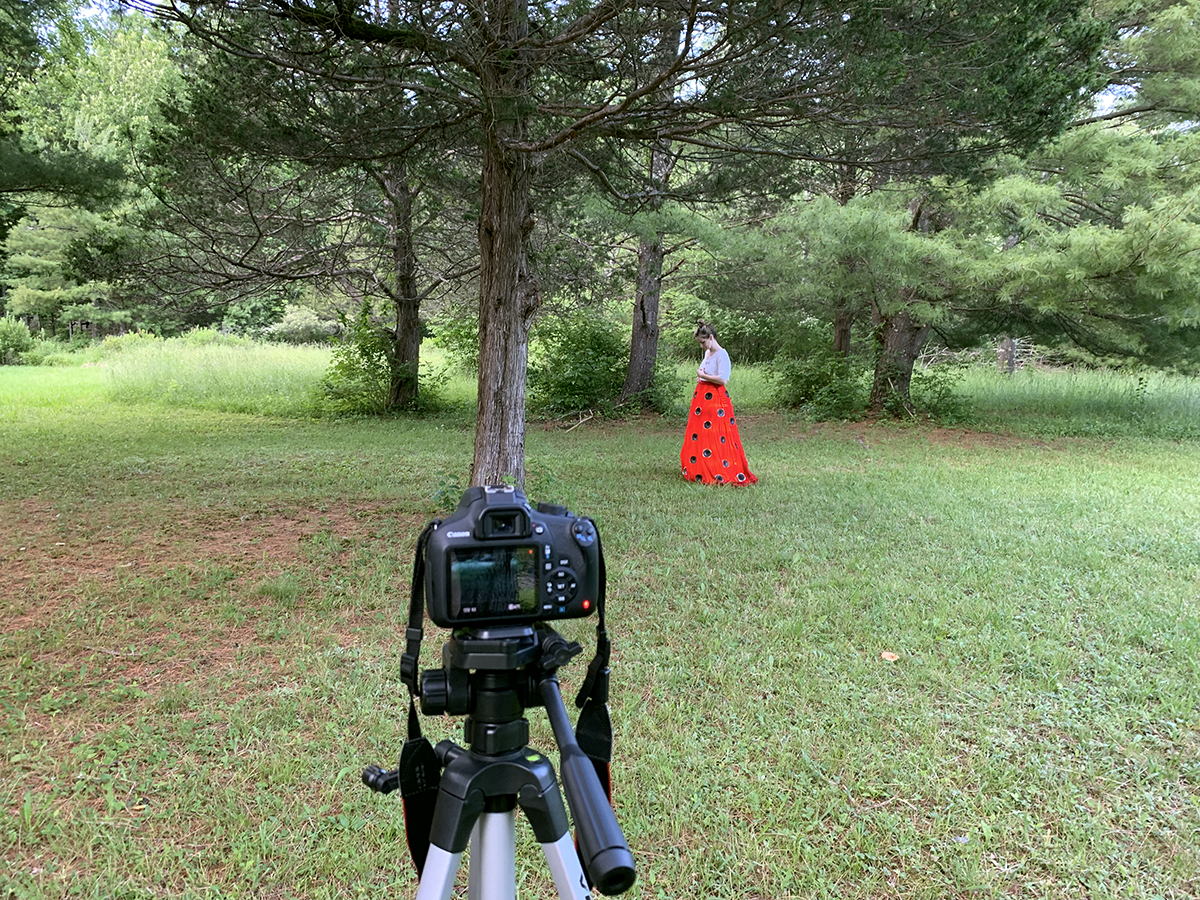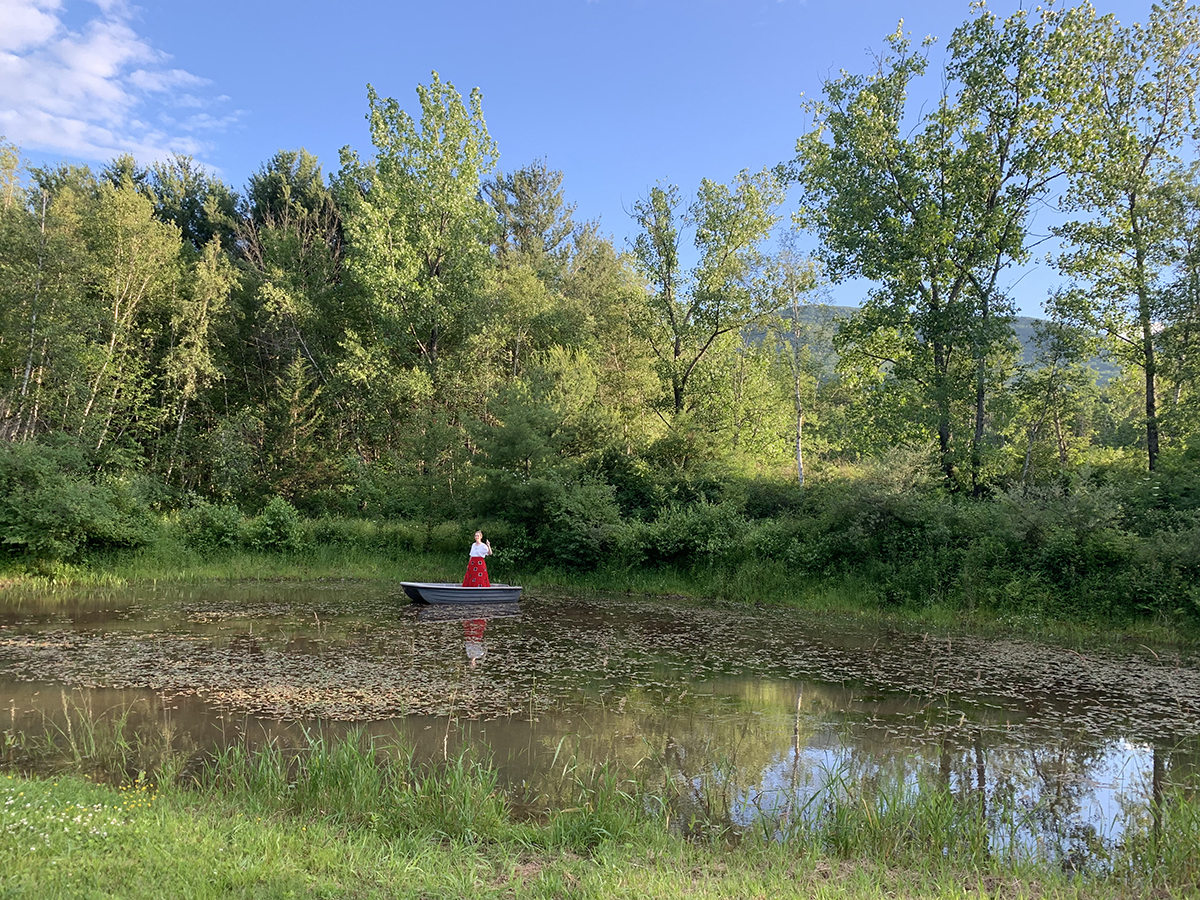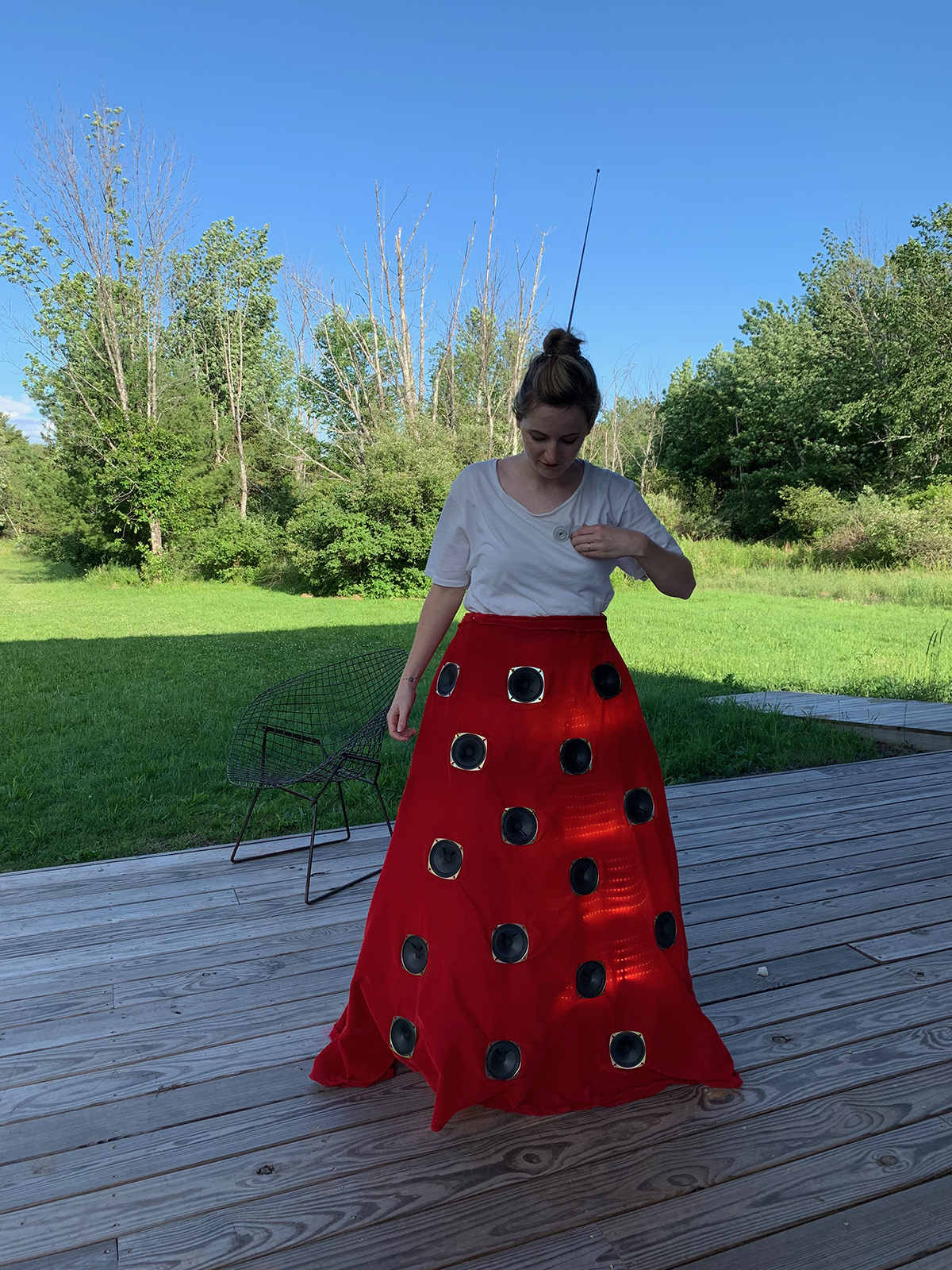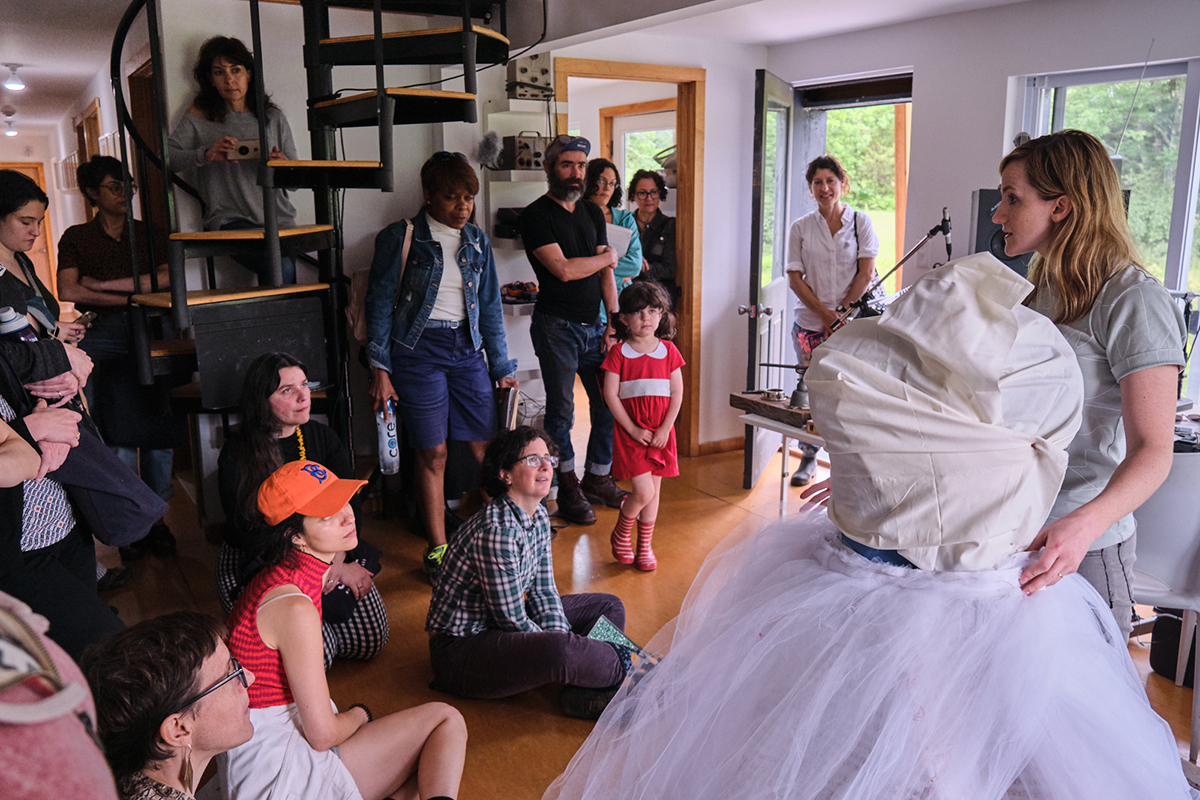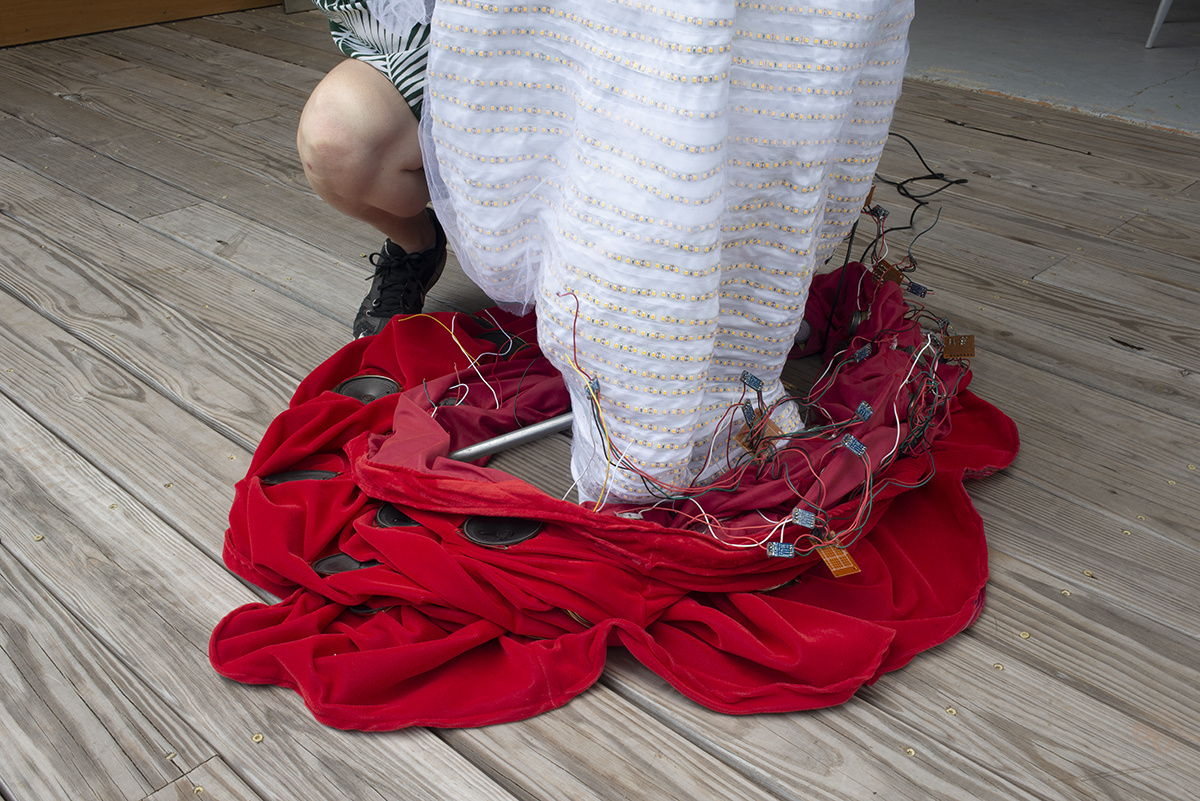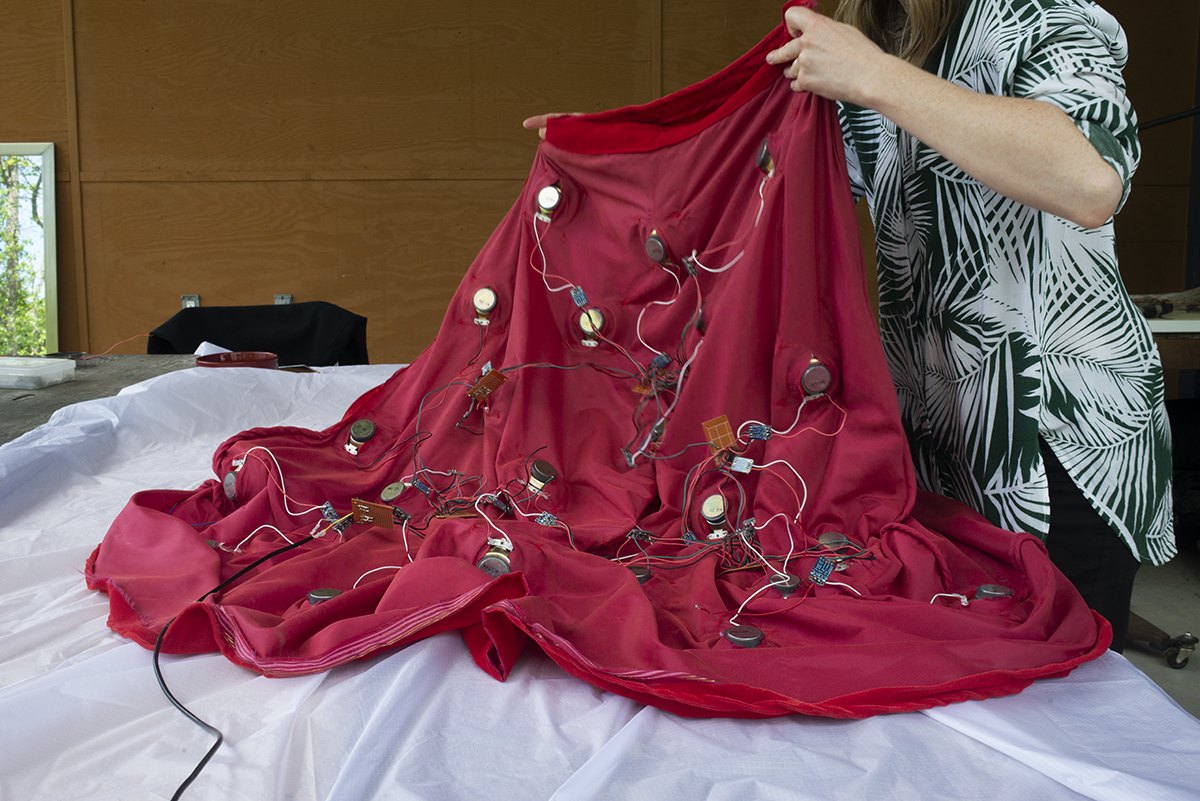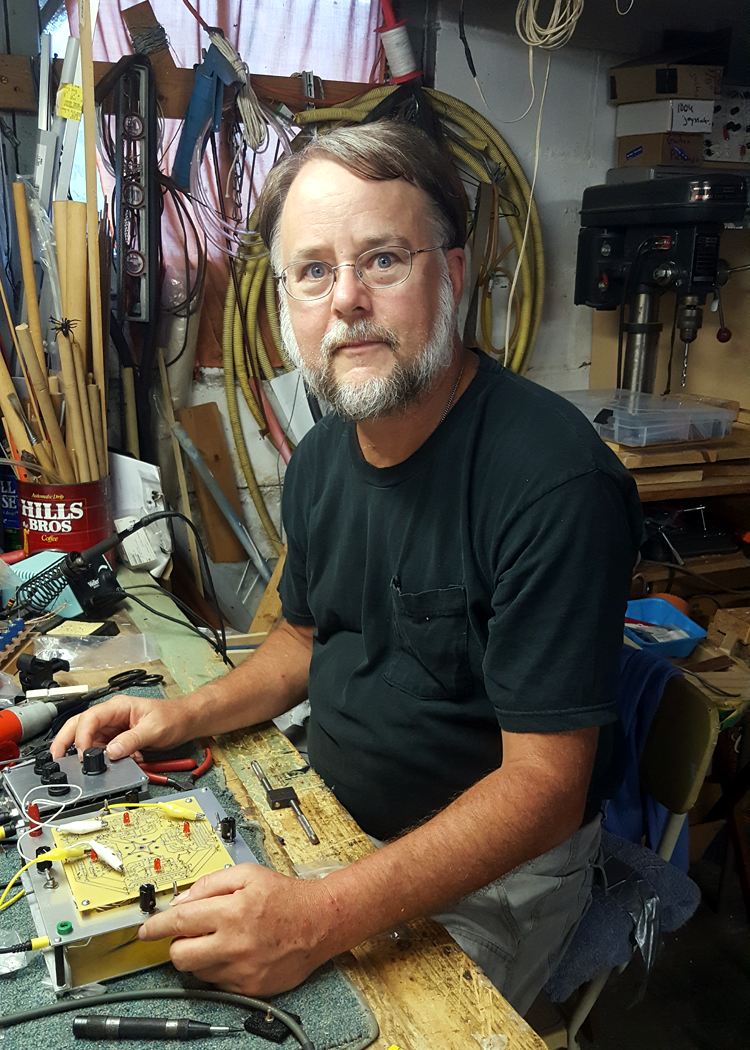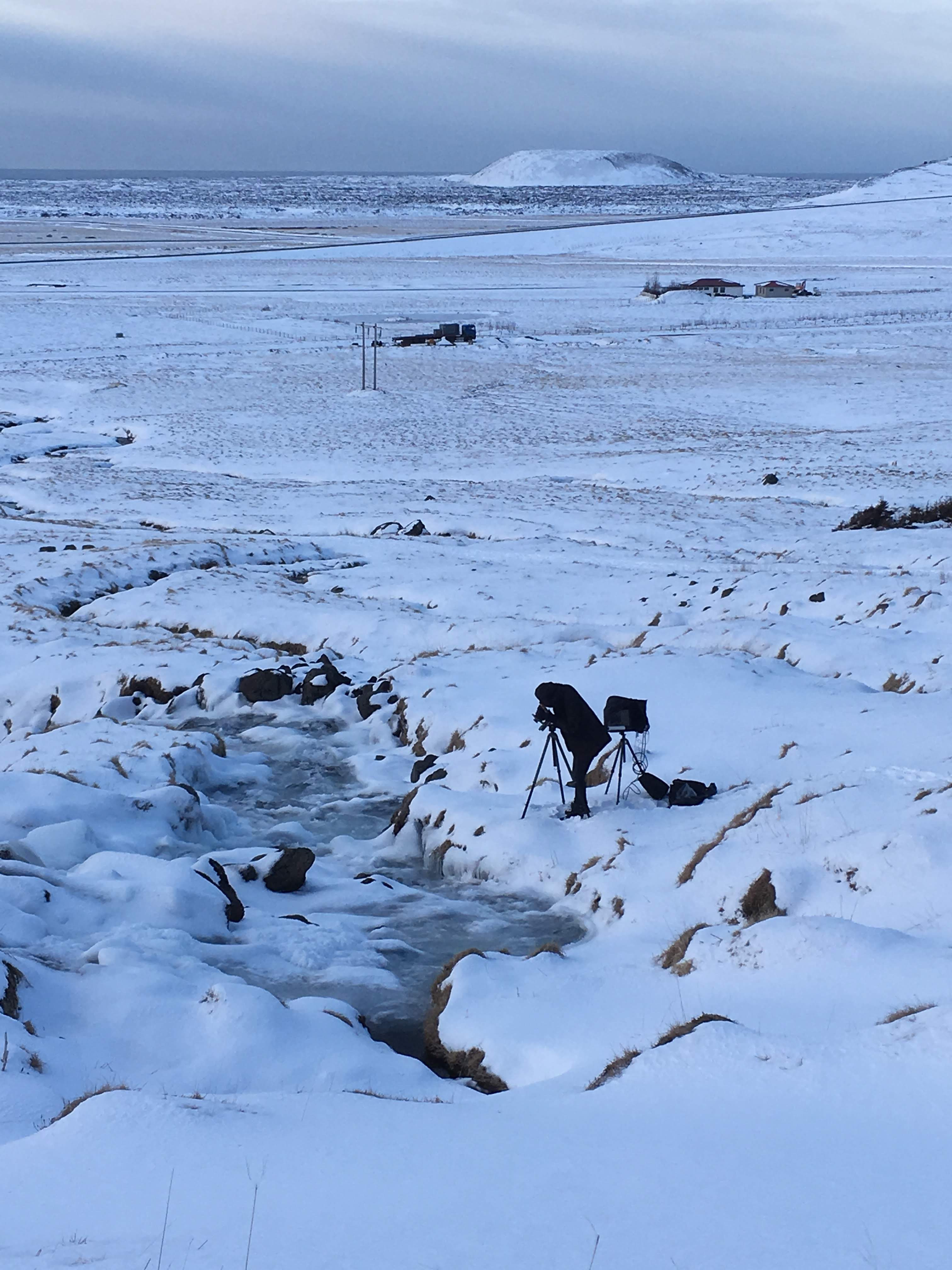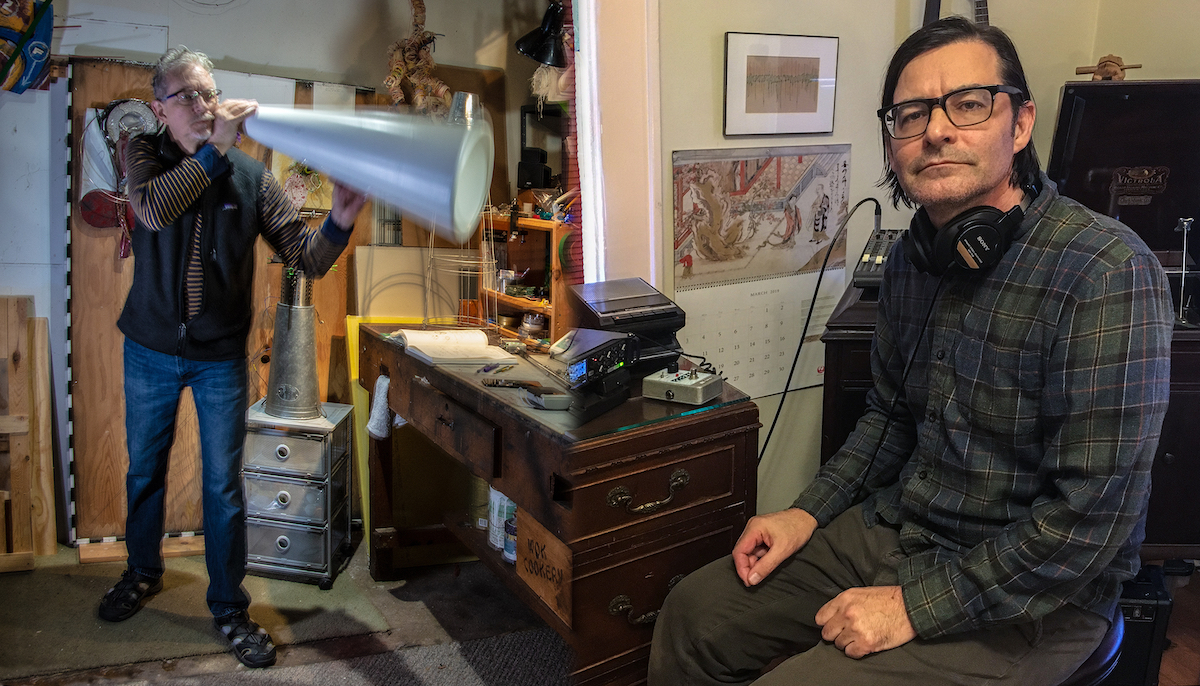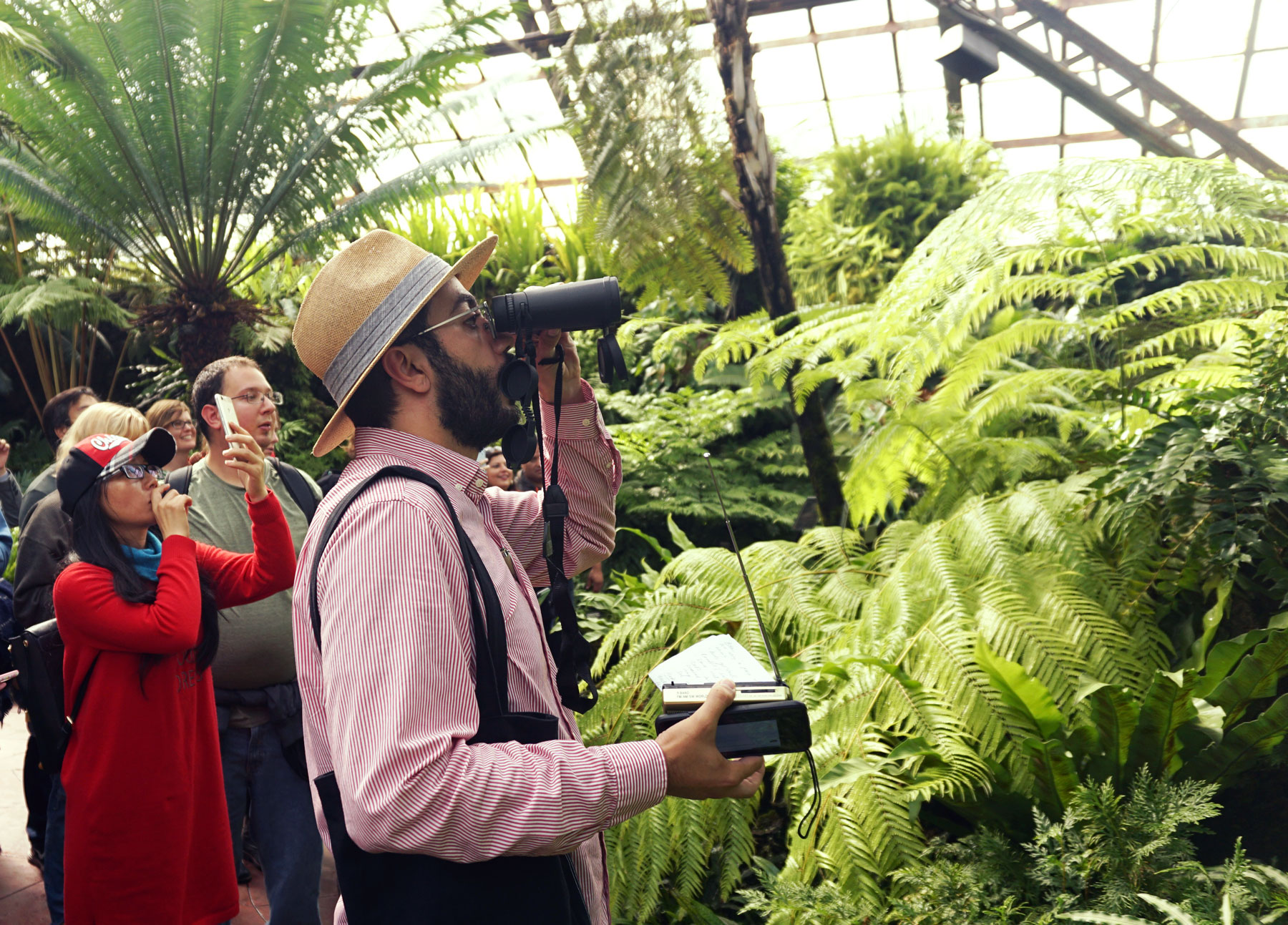About Wave Farm
2019 Wave Farm Artists-in-residence Announced
Acra, NY—Wave Farm announced today the artists and projects selected for the 2019 Wave Farm Residency Program. The 2019 program received a total of 104 submitted proposals, originating from 17 countries and 22 U.S. states. Each selected artist will live and work on-site at the Wave Farm Study Center for ten days during the residency season, which spans June through October.
In 2019, Wave Farm welcomes Kathy Kennedy (Montreal, Canada); Kathleen McDermott (Brooklyn/Troy, NY); Stefana Fratila (Toronto, Canada); Stephen Bradley (Catonsville, MD) and Edward Ruchalski (Syracuse, NY); Bob Drake (Cleveland, OH); Samuel Hertz (Berlin, Germany / Washington D.C.) and Carmelo Pampillonio (Asheville, NC); Lucy Helton (Brooklyn, NY); Milad H. Mozari (Chicago, IL); and Grant Smith and Sam Baraitser Smith (London, UK).
The Wave Farm Residency Program provides artists with a valuable opportunity to concentrate on new transmission works and conduct research about the genre using the Wave Farm Study Center resource library. Transmission Art encompasses work in participatory live art or time-based art such as radio, video, light, installation, and performance, as well as a multiplicity of other practices and media, where the the electromagnetic spectrum is an intentional actor (either formally or conceptually) in the work.
In conjunction with their residencies, artists perform, are interviewed, and create playlists for broadcast on Wave Farm’s WGXC 90.7-FM, a creative community radio station serving over 78,000 potential listeners in New York’s Upper Hudson Valley, and international listeners online. Resident works are archived in the Wave Farm Transmission Arts Archive at http://transmissionarts.org.
Wave Farm Executive Director Galen Joseph-Hunter said, “Artists making multidimensional work with and about the airwaves is what transmission art is all about. This year’s roster of artists, selected from our largest application pool to-date, has proposed exceptional projects that experiment with the electromagnetic spectrum in installation, composition, and performance. Focused on Transmission Art, the Wave Farm Residency program occupies an important place in this dynamic field internationally, and we are excited by the growth, interest, and support the program continues to experience.”
WAVE FARM RESIDENCY PROGRAM SELECTED ARTISTS AND PROJECTS
(in chronological order)
Kathy Kennedy (Montreal, Canada)—Radio Dialogues
Radio Dialogues is a daily ritual conducted over seven days while in-residence at Wave Farm. Two low power transmitters and radio receivers are positioned just outside of normal "earshot" range from one another. On one end is Kennedy and on the other a Hudson Valley-based collaborating artist. Two-way radio transmission unites the otherwise physically isolated artists in time and place and provides a framework for improvisational and site-specific performance.
Kathy Kennedy is a vocal artist who oscillates between sound art and music. She uses low watt transmission as a central axis for the exploration of physical space. Using only the voice and a few electronic devices she makes music that engages with the physicality of being in a particular place.
Kathleen McDermott (Brooklyn/Troy, NY)—The Public Speaker
A new project in McDermott’s wearable technology Urban Armor series, The Public Speaker is a skirt covered in 50 small speakers, which have been individually soldered to mini-amplifiers. A base skirt layer is covered in strips of LED lights, creating a soft glow behind the speakers, which pulses in time to audio frequencies. At Wave Farm, The Public Speaker will be transformed into an interactive walking radio receiver, tuned to overlooked and underheard frequencies, revealing invisible networks wherever she goes.
Kathleen McDermott combines craft and sculpture techniques with open-source electronic experiments to build video-based narratives of a strange future. She takes a critical perspective on emerging and wearable technologies by creating electronics that are counterproductive, humorous, and uncontrollable. A recurring theme in her work has been the relationship between technology, the body, and personal and public space, grounded in the belief that absurdity can be an appropriate response to technologically-enabled feelings of alienation.
Stefana Fratila (Toronto, Canada)—Mid-Orbit: A Radio Sitcom About the 8 Planets
Mid-Orbit: A Radio Sitcom About the 8 Planets is a radio play based on the planets in our solar system. Inspired by the planetary orbits and their associated mythologies, this radio piece playfully mixes classic sitcom tropes and sound effects, loveable and archetypical characters, and ambient music. This situational comedy utilizes radio waves and transmission frequencies from the planets themselves, as well existing data about their various atmospheres to generate the accompanying score. Curiously, in this sitcom the Earth is stricken with a case of laryngitis and remains silent throughout, which begs the question— what happens when we simply listen?
Stefana Fratila examines the act of bearing witness through public interventions, performances, sound and video installations. Interested in interrogating the relationship between memory and the body, she often incorporates her own experiences with disability and chronic illness. Her recent work focuses on how sound waves might be perceived by human ears as they travel through the different atmospheres of our solar system.
Stephen Bradley (Catonsville, MD) and Edward Ruchalski (Syracuse, NY)—SpiderCricket (Sp+Cr)
Stephen Bradley and Edward Ruchalski’s SpiderCricket (Sp+Cr) is a multi-phonic ecological radio installation informed by Wave Farm’s biophonic and radiophonic soundscape. The core of Sp+Cr uses a “spider web” wind-harp structure, which also functions as an antenna for low-power FM transmitters that broadcast on the property. Using DIY micro-mixers, numerous solar-powered FM radio receivers are tuned to one of the broadcast channels. Each wire’s unique length is tuned to a particular frequency that mixes with other sonic algorithms. Field recordings made during the dawn and dusk cycles are incorporated into Sp+Cr sculpture and into the final, live WGXC radio broadcast.
Bradley and Ruchalski’s (B&R) practice is informed by their close relationship to place realized through radio, deep listening, acoustic intervention, and compositions based on environmental field recording. Their artistic practice is grounded and based on studies of acoustic spaces, engaging site-specific improvised sound actions and installations that raise the audience’s awareness of the hidden, often subtle and difficult to hear sounds found amidst bioacoustics and noisy landscapes.
Bob Drake (Cleveland, OH)—RC (Radio Control)
RC (Radio Control) is a collaborative performance system for multiple movement artists and software defined radios (SDRs). The system enables performers to adjust the tuning and other parameters of the SDRs based on their location within the performance space and position. Video cameras aimed at the performance area feed images to a motion tracking patch in Max (software), generating location information which will be scaled and sent to the SDRs via OSC messages, controlling their tuning. Performers will have individual choreography instructions for the piece; some will be attempting to control the sounds of the radio in a specified sequence, others will have movement instructions based on the sounds they hear.
Bob Drake is an improvising musician, composer, and electro-acoustic luthier from Cleveland Ohio. He designs, builds, and plays electronic instruments in the tradition of Don Buchla and David Tudor, performing on these electroniums plus original electro-acoustic and extended-technique traditional instruments. His performances span free and structured improvisation, new music composition, noise, and minimalist “lowercase” musics. He teaches sound art, media installation, and electronics at Cleveland Institute of Art.
Samuel Hertz (Berlin, Germany / Washington D.C.) and Carmelo Pampillonio (Asheville, NC)—Librations
Samuel Hertz and Carmelo Pampillonio’s Librations is a performance/composition using a radio communications relay, which transmits signals to the Moon, that are then reflected back to Earth—a moonbounce. Librations is realized in cooperation with broadcast engineers at the Pisgah Astronomical Research Institute (PARI) in Rosman, North Carolina. Culminating in a composition, radio broadcast, and multi-media essay, the artists’ collaboration throughout the residency period stands as an open field of negotiations between the Earth, the Moon, and the sonic/energetic traces reflected between them.
Samuel Hertz and Carmelo Pampillonio are sound artists and researchers who synthesize documentary practices of geophysical and atmospheric forces with the artistic practices of composition, transmission, and installation. Approaching ways in which we can develop notions of affect and ecological entanglement, their work explores complex interactions between non/human timescales, geophysical phenomenology, and sonic materialities.
Lucy Helton (Brooklyn, NY)—WEFAX (Weather, Water and Climate Prediction)
The radio WEFAX is a receptive instrument that converts numerical weather data, transmitted from dedicated stations, into visual form. At Wave Farm, Helton will continue her practice with image transmission using low energy radio waves with these devices, extending her meditations on the future state of the environment. In our current period of great meteorological and climate disturbance, the weather forecast plays a major role in the prediction, detection, and mitigation of the negative effect of natural disasters. During her time at Wave Farm, Helton will transmit via radio frequency, images of accelerated environmental change creating an installation of radio weather faxes and their output.
The fictitious and prophetic landscapes Lucy Helton creates subtly address contemporary environmental concerns, by offering a vision of the future that’s both frightening and beautiful. Her photographs contain a visual play between the real and the imagined, regularly referencing technological innovation, they incorporate a variety of imaging strategies, including panoramas and stitched frames. Meditations on the future state of the environment and if human colonies will exist outside planet earth, led to her discovery and fascination with basic image transmission using low energy radio waves. Her resulting artworks test the boundaries of art and technology, questioning our current path of planetary destruction.
Milad H. Mozari (Chicago, IL)—The Birdwatcher (title pending)
The Birdwatcher (title pending) is a radio drama that will be adapted for an experimental short film about Reza Tabatabaei. In 1980, Reza, Mozari’s uncle, was jailed for reading a poem at the funeral of a political protester and neighbor after the Iranian Revolution. Before this incident, he was a radio broadcaster in Iran for 24 years. The majority of his archives are gone since raids to his house and him passing away in 2015. Reza had a particular fondness for nature, and also shared a love for birds with his wife. Whenever the two would get into a fight, Reza would bring a canary bird home as a form of an apology. At one point, they housed 46 canaries and a Cockatoo parrot in their home. Mozari’s sound sketch will inform his future film. The cacophony of birds over the radio, field recordings mixed with wind shear, and the voice of a narrator will comprise the key elements of the radio drama.
Milad H. Mozari’s work moves through concepts of music, belief systems, absence, and structures. His research-based practice often starts with sound or spatial experiments, which then attempt to resonate physically, historically, and experientially. These projects often become film, performance or installation in their final form, and reflect on the sonic and social aspects of a site.
Grant Smith and Sam Baraitser Smith (London, UK)—Acoustic Commons
The Acoustic Commons describes a range of work that deals with the close association between sounds and places. This includes “environmental” broadcasting, sound mapping, and the development of new “transmission ecologies” making links between very local projects in urban, rural, and peri-urban areas. It also refers to a work in progress which invites people to open places as sites for listening. While in residence, the artists will set up a new permanent live audio stream, placing environmental sounds from the Wave Farm property in the public domain, and designate it as an experimental site of of the Acoustic Commons (AC Experimental Site 0_). A newly designed streambox will be installed to transmit the sounds to a live soundmap at Locus Sonus (http://locusonus.org/soundmap). Drawings on paper and online and a booklet (working title: (un)Manifest(o) for Acoustic Commoning) will document the project.
Grant Smith is an artist and writer working on sound, transmission, text, domestic and social projects in Loughborough Junction, South London. He co-founded the Soundcamp cooperative, and maintains a long term project at self-noise.net, which documents the mundane and ephemeral. Current activities include The Acoustic Commons, a project and 'wild concept' dedicated to sharing environmental sounds. Sam Baraitser Smith is a graphic designer and musician. He has been studying graphics and communication at Central St Martins, London and School of Visual Arts, New York. As a member of Art Assassins at South London Gallery, he has collaborated with Tenderlonious, Erik van Lieshout, and Thomas Hirschhorn. Sam has worked with Soundcamp to develop graphic representations of sound and place.
Wave Farm is a non-profit arts organization driven by experimentation with broadcast media and the airwaves. A pioneer of the Transmission Arts genre, Wave Farm programs provide access to transmission technologies and support artists and organizations that engage with media as an art form. Major activities include the Wave Farm Artist Residency Program, Transmission Art Archive, WGXC 90.7-FM, and the Media Arts Assistance Fund in partnership with NYSCA EMF.
More information about the 2019 Wave Farm Residency Program artists and works as well as Wave Farm is available at https://wavefarm.org.



